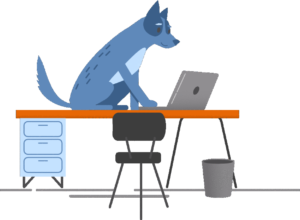- Revenue Optimisation
-
-
RevOps Services
-
- RevOps Services
-
-
- Our Pack
-
-
Our Pack
-
-
-
- Client Stories
-
-
Client Stories
-
-
-
- Resources
-
-
Resources
-
-
-
- Contact us








by Matt Campion
July 23, 2020
In this time of uncertainty and unknowns around building pipelines and achieving revenue targets, we tend to look inward, diving into the data to get clarity on how our customers and the market as a whole are reacting and behaving.
Ultimately, we look to the aspects of our business that we can control. It’s important to examine areas we can fine-tune. How are we engaging customers, when and how do we respond to their requests and who on the team is responsible for checking in to find out how they are coping and adjusting? Who on the team is responsible for doing which activity? Is the account rep the first point of contact right now or is the inside or customer success team more applicable? If the customer is not ready to make a buying decision, you absolutely want to stay engaged, be helpful, and stand out from the crowd so you’re top of mind when decision time comes around.
Let’s take a closer look at your Salesforce CRM system and business process areas to consider during this time with the goal to achieve even greater efficiencies. By looking at specific process stages and system areas, you could use this time to perform a system makeover as buyers and markets will continue to go through some ups and downs.
Of course, your CRM system is constantly changing as you adapt workflows, create new views, and modify reports when business-as-usual changes happen. Those changes take many forms — from pricing, territory planning, account ownership, and new products — that need to be documented and communicated for smooth operations. For the most part sales operations teams take all of this in their stride assuming governance and change management policies are adhered to. Process and system changes are only as good as users who follow them and you need elapsed time before you can begin to measure, iterate, and improve.
With COVID-19, change feels different. It permeates or ‘seeps-in’ to many different parts of the business and its impact can cause different degrees of deal volatility. When changes are across the entire sales cycle, it affects the ‘crown jewels’ which means the pipeline and forecast are impacted. It’s not so easy to recover and without a higher degree of visibility, it’s difficult to know where risks lie, how to manage through them, and ultimately what adjustments to make.
Let’s start with key considerations focusing on mid-funnel or in other words sales qualified leads /opportunities (SQLs). You’ve invested resources and time with accounts that you believe will purchase in a specific timeframe. Now the questions begin. Will the customer still purchase, at the proposed price point, in the timeframe that we previously agreed to and how many services, and add-ons are required? Lots of considerations and conversations.

According to a recent McKinsey survey, The B2B digital inflection point: How sales have changed during COVID-19, numerous adjustments are cited such as the move to all digital interactions. Findings show that all-digital interactions are, “two to three times more important to their customers than traditional sales interactions.” It’s interesting to see an almost doubling in the likelihood of buyers self-serving in B2B, as opposed to a guided sale. This certainly means a lower cost of sale.

If you have a self-serve model today, how is it performing? If you don’t have self-service figured out, is now the time to investigate, assuming it applies to your business model and product or service? Do you see differences in initial deal value for self-service or are you seeing latency across all buying stages? Do you have a well-defined nurture stream and cadence with insights to tell the team when it’s time to ask for an upsell?
Self-service buying relies on numerous tools tightly coupled with your sales process stages such as Intercom or Outreach. You will undoubtedly see stark differences in funnel conversions when comparing with guided or sales-led deals. How is it performing overall and should you reorient and retrain to better understand how to conduct an all-digital transaction?
Do your sales process stages need a refresh?
How do your Salesforce workflow and automation steps currently map to the agreed stages and customer buying cycle? If those buying cycles are taking longer, do you have adequate post-SQL stages to understand which opportunities are delayed due to budget approvals? Again, if you have a predominantly self-serve model, perhaps you need to streamline those stages and think about how to automate based on the actual user behavior.
Understanding the full impact of deal delay during pipeline and forecast reviews will help the team know how creative they need to be during evaluation and negotiation phases. Key questions to consider:
Customers will notice and appreciate when their account team works hard to win their business and make sure they are fully supported during these tough times.
Understand your risks & opportunities – changes you can make right now to help your team focus:
Agreeing on standard terminology and naming in Salesforce might seem trivial but it’s a good way to help everyone stay focused. This is a time when you may need to revisit some of your standard naming conventions. It’s a quick way to call out deals that are impacted by COVID-19 so you quickly spot what is at risk.
When team-members are under pressure to create new opportunities, you may want to eliminate certain industry segments or geographies that are simply too risky. Account segmentation and planning take time and it’s difficult when the data is lacking. Let’s say you want to opportunistically target accounts in banking and healthcare and ignore opportunities in the hospitality or travel segments, you need the right data and field augmentation to deprioritize certain accounts.
Salesforce Appexchange has many partner tools that help augment by auto-populating industry fields with company/account matching which makes reporting a breeze. ZoomInfo/DiscoverOrg has a built-in tool named Enrich that runs a background job for such data augmentation. This is especially important for inbound leads from Pardot or Hubspot form-fills, deliberately minimal to encourage high response rates. The Enrich feature will augment the Salesforce record with additional fields such as geography and account size (S, M, L) that’s helpful when you need to focus on specific customer profiles that are less impacted by COVID-19 and more apt to buy your solution.
Keep up with team changes & stay optimistic
With standard team attrition, it can be pretty straightforward to keep up with adjustments to workflow steps and account assignment rules. With the new normal, many changes now require closer attention. Geographic assignments are pretty straightforward and Salesforce workflow rules are easy to set up. However, when you need to take a hybrid approach and say reassign territories or break up existing territories with an overlay of named account focus, that can become challenging to stay on top of. To avoid team frustration, you need to document clearly before adjusting the system and of course communicate clearly once done, keeping everyone incentivized to reach (or exceed) revenue targets. Territory and account ownership are highly sensitive during normal business operations and they become even more critical in a dynamically changing climate.
This is especially important when a sales rep is proactively managing an important account and the rep needs to know when an inbound lead is generated for that account. Lead flow steps are especially key if the lead is an influencer or decision-maker. Getting timely visibility is exactly what the rep wants and LeanData has an excellent tool for deduping and account matching leads that come inbound. Implementing tools like this save you time, help the rep focus on the right deals, and most importantly the customer receives a timely response.
Makeover Merits
When business hums along and revenue targets are exceeded, taking a step back to cross-examine the system becomes much harder. It’s generally put off with a response like, “I’ll get to that later when I’m not so busy”. Sure, there’s plenty of fine-tuning and reporting adjustments but a makeover is not usually considered as we’re all busy, heads-down buried in our to-do lists. Ironically, it’s when things don’t run so smoothly that you need to conduct a closer examination to understand the cause and impact. Teasing apart existing processes and systems to discover what needs attention and staying focused with an agile approach is what you need to spend time on right now. In an all-digital world, it’s important to streamline process stages and automate where you can, especially in a self-serve model. As the McKinsey report concludes, “In this remote and digital world… there is still a crucial role for the human touch.” Let’s not forget to humanely engage with our fellow sales team and especially the Salesforce administrators and operators who are doing their daily best to keep up with continuous change and trying to get ahead of the next normal.
Share